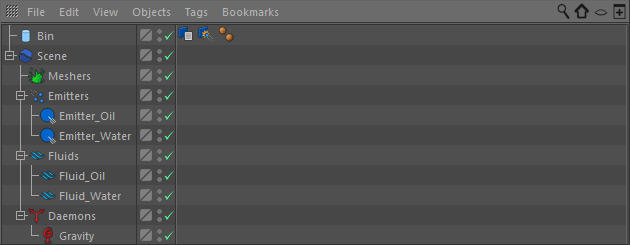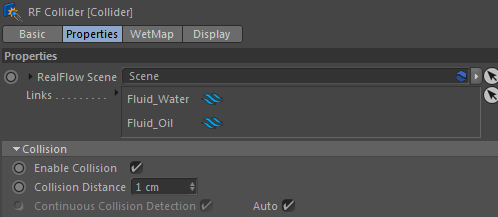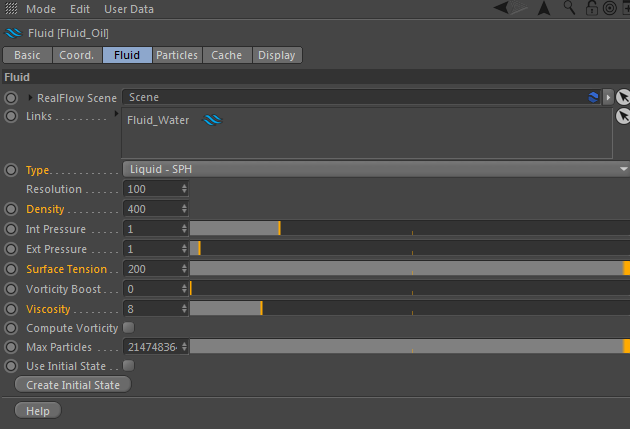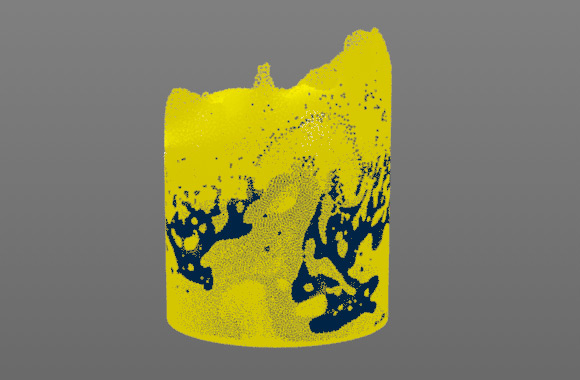Multiple Fluids
RealFlow | Cinema 4D is able to simulate interactions between different fluids to achieve effects like the separation of water and oil, or sand being washed away by water.
The scene setup follows exactly the same rules as with a single fluid:
- Create two or more fluid containers and emitters and adjust them.
- Add daemons and objects on demand.
A typical setup for a water-and-oil simulation.
Checking Links
The most important part is to check the → links between the scene objects:
- If you want a daemon to act on all fluids put the fluids to the "Links" fields.
- The same applies to the "Collider" tags: fluids will only interact with linked objects/tags.
Both fluid containers have to be linked to the "Gravity" daemon and the "Collider" tag of the bin.
In order to make the fluids interact with each other they have to be linked as well: Fluid_Water => Fluid_Oil and Fluid_Oil => Fluid_Water
The emitters have to be linked to their appropriate fluid containers: Fluid_Water => Emitter_Water and Fluid_Oil => Emitter_Oil
Density & Surface Tension
The fluids' "Density" parameters are the key to oil-water separation or foamy materials:
- The fluid with the lower "Density" value will float on top, the one with the higher density will sink.
- If both fluids have the same "Density" values they will mix, not separate.
- Search the internet for density values for different materials.
- Sometimes it is necessary to use a rather big difference between densities, e.g. 400 and 1000, in order to see a separating effect.
"Surface Tension" can be used to create bubble-like structures or drops, and create a better, more realistic impression, and slightly higher "Viscosity" for the oil is also helpful.
The settings for "Fluid_Oil" with low "Density" and increased "Viscosity". "Surface tension" creates drops.
Alternatives
If the result with → "Liquid - PBD" fluid does not meet your expectations you can also try to redo the simulation with → "Liquid - SPH".




